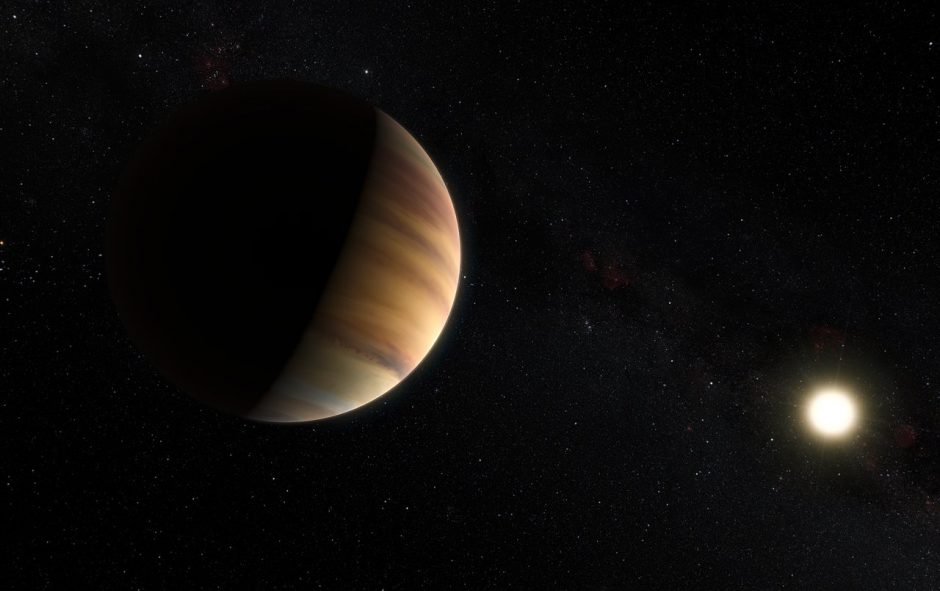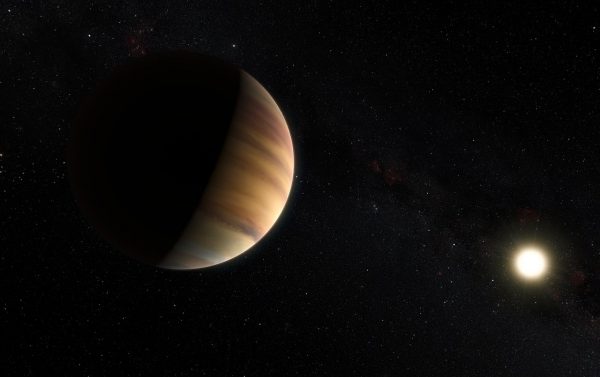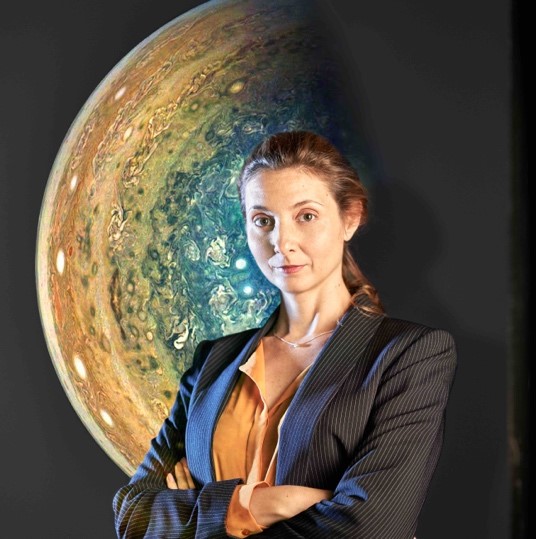The importance of theory in exoplanetary science

Scientists at the University of Zurich associated with the National Center of Competence in Research PlanetS reveal considerable uncertainties in the theoretical understanding of giant gas planets. This emphasizes the importance of further developing theoretical aspects of exoplanetary characterization.

Artistic illustration of a giant gas planet and its host star © ESO/M. Kornmesser/Nick Risinger
Planets that orbit other stars are very far away. Even the ones close enough for instruments to detect can be at a distance of hundreds of light years from Earth. Obviously, that makes them hard to find and even harder to characterize. The signal upon which such results are based, are often little more than a slight dimming or color shift of the already faint light of a distant star. Naturally, errors in measurement can occur. However, as instruments become ever more sophisticated and precise, other areas become a relatively larger source of error. Using numerical giant planet evolution calculations, scientists, led by Simon Müller of the University of Zurich and the NCCR PlanetS, investigated just how much of a factor theoretical uncertainties can become. The study results were recently published in the Astrophysical Journal.
A framework for characterization

Simon Müller is a PhD at the Center for Theoretical Astrophysics and Cosmology of the University of Zurich. Photo: Tom Hands
“Unlike its mass and radius, the composition of an exoplanet cannot be measured directly. In order to learn more about a planet’s nature – what it is made of, for example, or its internal structure – astrophysicists can therefore not rely on measurements alone”, Simon Müller explains. Instead, they must infer it, with the help of a theoretical framework – or model – based on detailed investigations of the planets in our solar system, as well as some fundamental physics. Such physics include the behavior of elements under different conditions, for example, or the distribution of different elements within planets. Once a planet’s measurements are taken (other than mass and radius that can be the temperature, likely age and the composition of its host star), this model allows researchers to characterize planets and thus draw conclusions about their nature. The accuracy of the scientists’ conclusions is therefore not only dependent on the measurement quality but also on the theory – or, as they would call it, their model, and its assumptions. But how precise are these models, especially compared to the observational instruments?
Model uncertainties can become a limiting factor

Ravit Helled is a Professor of Theoretical Astronomy at the University of Zurich. Image credit: Jos Schmid
This is what Müller and his colleagues investigated. “What we found, is that the inferred compositions of giant gas planets can be very different due to different model assumptions, even if they are based on the same measurements”, Müller says. So, for example, slight differences in the assumed element distribution within a planet can lead to largely varying results. This has implications for efforts in exoplanetary science and for the ability to characterize and understand exoplanets, as study co-author and Professor of Astrophysics at the University of Zurich, Ravit Helled, emphasizes: “Theoretical aspects are often neglected compared to the advancement of measurement instruments but they are critical for the data interpretation. Progress in exoplanet science must therefore include both theory and observations”, she says “Our results show that we really need to understand the model framework better before we can make the most out of improved future instruments”, Müller concludes.
Publication details:
Theoretical versus Observational Uncertainties: Composition of Giant Exoplanets, Simon Müller, Maya Ben-Yami and Ravit Helled, ApJ 903 147 https://iopscience.iop.org/article/10.3847/1538-4357/abba19

